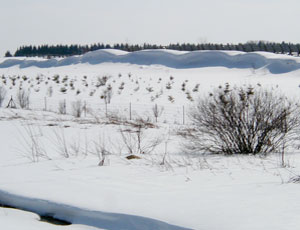New York state’s Dept. of Transportation is bringing science to snowdrifts.
The agency last month presented “SnowMan,” software for optimizing snow fences on existing roads and for designing highways to reduce drifts, at a conference of the National Academy of Sciences Transportation Research Board. Stuart Chen, a professor of civil, structural and environmental engineering at the University at Buffalo, the State University of New York, who designed the software with Michael Lamanna, a former graduate student, says it can reduce whiteouts and pavement icing and the “extra costs” of snow plowing and deicing salts.

The state has been working on the project intermittently with Brookhaven National Laboratory, Upton, N.Y., and UB for more than a decade. Development was aided by Darrell Kaminski, regional design engineer for NYSDOT’s western region, and snow and wind engineering consultant Ronald Tabler, founder of Tabler and Associates, Niwot, Colo. Tabler has collected snowdrift field data since 1960.
The software draws on fluid mechanics, Tabler’s field data, drift prediction algorithms and seasonal snow and wind velocity data for most of the state. “There’s a tremendous amount of knowledge embedded in the program,” says Kaminski.
SnowMan has already been used to decrease drifting on a once problematic road in the town of Alden. Joseph F. Doherty, senior civil engineer in NYSDOT’s operations division in Albany, says the software’s big advantage is in letting engineers run through a lot of “what if” scenarios. “In the past, we’ve done a lot of trial and error. Our people know where the bad spots are,” he says.
Typically, NYSDOT bases snow fence locations on anecdotal evidence and written reports from Tabler. Some are placed on highway rights-of-way. Others require permission from property owners. In some cases, the state pays farmers to plant specific crops to catch blowing snow.
Chen says the software also lets designers of new roads “explore whether snow drifting will be a problem with the roadway alignment and cross section that is contemplated.” Engineers can modify cut-and-fill designs, or even create catch basins. “SnowMan is an attempt to automate the design process,” Tabler says.
Other states have approached Chen and Doherty about adapting the software. NYSDOT owns the tool, but used some federal research money to develop it. It is investigating how best to share it. “We think it will be valuable in a lot of different states,” Doherty says.

Post a comment to this article
Report Abusive Comment